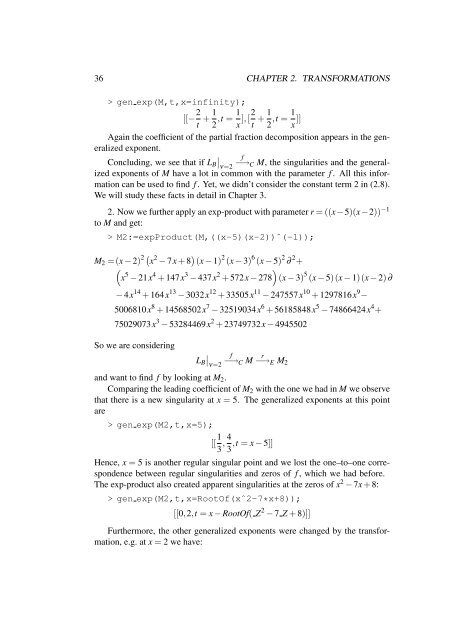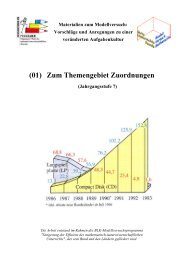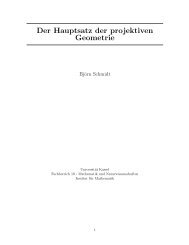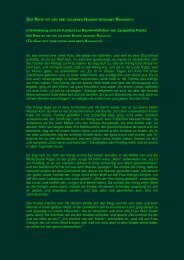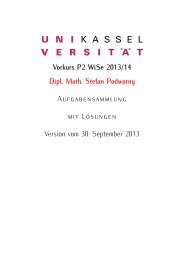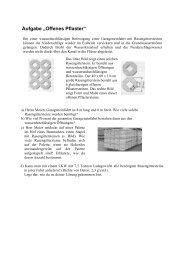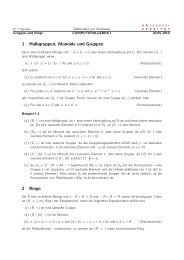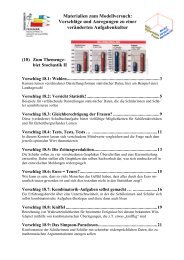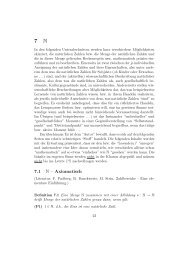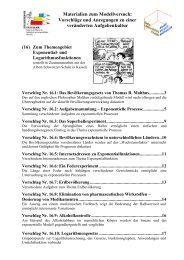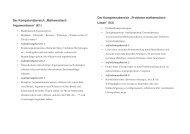Solving Differential Equations in Terms of Bessel Functions
Solving Differential Equations in Terms of Bessel Functions
Solving Differential Equations in Terms of Bessel Functions
You also want an ePaper? Increase the reach of your titles
YUMPU automatically turns print PDFs into web optimized ePapers that Google loves.
36 CHAPTER 2. TRANSFORMATIONS<br />
> gen exp(M,t,x=<strong>in</strong>f<strong>in</strong>ity);<br />
[[− 2 1 1<br />
+ ,t =<br />
t 2 x ],[2<br />
1 1<br />
+ ,t =<br />
t 2 x ]]<br />
Aga<strong>in</strong> the coefficient <strong>of</strong> the partial fraction decomposition appears <strong>in</strong> the generalized<br />
exponent.<br />
f<br />
Conclud<strong>in</strong>g, we see that if LB<br />
−→C M, the s<strong>in</strong>gularities and the general-<br />
ν=2<br />
ized exponents <strong>of</strong> M have a lot <strong>in</strong> common with the parameter f . All this <strong>in</strong>formation<br />
can be used to f<strong>in</strong>d f . Yet, we didn’t consider the constant term 2 <strong>in</strong> (2.8).<br />
We will study these facts <strong>in</strong> detail <strong>in</strong> Chapter 3.<br />
2. Now we further apply an exp-product with parameter r = ((x−5)(x−2)) −1<br />
to M and get:<br />
> M2:=expProduct(M,((x-5)(x-2))ˆ(-1));<br />
M2 =(x − 2) 2 x 2 − 7x + 8 (x − 1) 2 (x − 3) 6 (x − 5) 2 ∂ 2 +<br />
<br />
x 5 − 21x 4 + 147x 3 − 437x 2 <br />
+ 572x − 278 (x − 3) 5 (x − 5)(x − 1)(x − 2)∂<br />
− 4x 14 + 164x 13 − 3032x 12 + 33505x 11 − 247557x 10 + 1297816x 9 −<br />
5006810x 8 + 14568502x 7 − 32519034x 6 + 56185848x 5 − 74866424x 4 +<br />
75029073x 3 − 53284469x 2 + 23749732x − 4945502<br />
So we are consider<strong>in</strong>g<br />
f<br />
LB<br />
−→C M ν=2<br />
r<br />
−→E M2<br />
and want to f<strong>in</strong>d f by look<strong>in</strong>g at M2.<br />
Compar<strong>in</strong>g the lead<strong>in</strong>g coefficient <strong>of</strong> M2 with the one we had <strong>in</strong> M we observe<br />
that there is a new s<strong>in</strong>gularity at x = 5. The generalized exponents at this po<strong>in</strong>t<br />
are<br />
> gen exp(M2,t,x=5);<br />
[[ 1 4<br />
, ,t = x − 5]]<br />
3 3<br />
Hence, x = 5 is another regular s<strong>in</strong>gular po<strong>in</strong>t and we lost the one–to–one correspondence<br />
between regular s<strong>in</strong>gularities and zeros <strong>of</strong> f , which we had before.<br />
The exp-product also created apparent s<strong>in</strong>gularities at the zeros <strong>of</strong> x 2 − 7x + 8:<br />
> gen exp(M2,t,x=RootOf(xˆ2-7*x+8));<br />
[[0,2,t = x − RootOf( Z 2 − 7 Z + 8)]]<br />
Furthermore, the other generalized exponents were changed by the transformation,<br />
e.g. at x = 2 we have:


